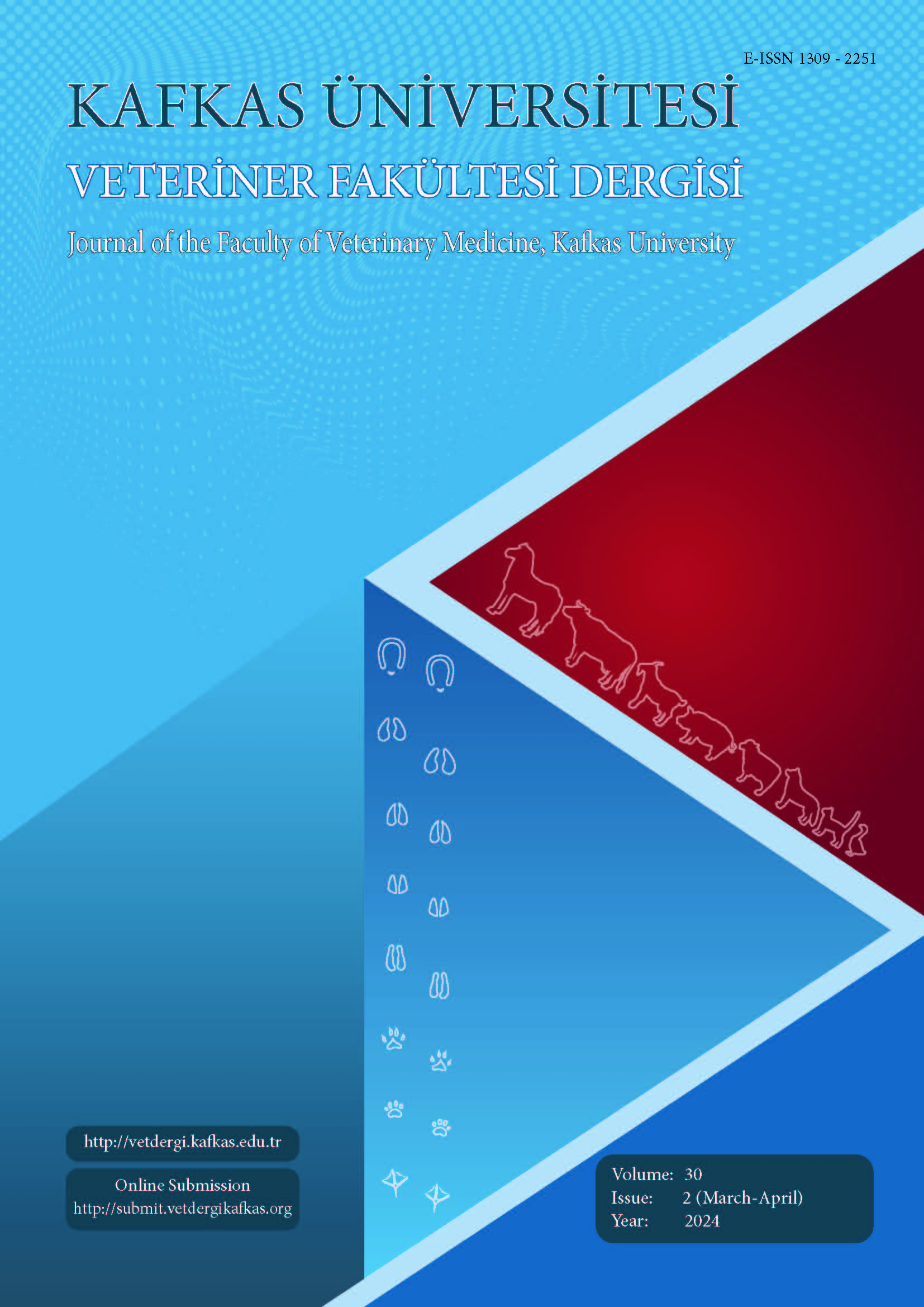
This journal is licensed under a Creative Commons Attribution-NonCommercial 4.0 International License
Kafkas Üniversitesi Veteriner Fakültesi Dergisi
2024 , Vol 30 , Issue 2
Influences of Desflurane on the Central and Hepatic Circadian Clock Persist at 24 Hours Following Anaesthesia in Rats
1Pamukkale University, Faculty of Medicine, Department of Anesthesiology and Reanimation, TR-20160 Kinikli, Denizli - TÜRKİYE2Pamukkale University, Faculty of Medicine, Department of Physiology, TR-20160 Kinikli, Denizli - TÜRKİYE DOI : 10.9775/kvfd.2023.30396 Circadian rhythm disturbances caused by anaesthesia may be one of the important reasons of many disturbances following surgery. The effects of 6% desflurane on suprachiasmatic nucleus (SCN), liver, and pancreas PER2, CRY1, BMAL, and CLOCK circadian protein levels and serum concentrations of glucose, melatonin, cortisol 24 h following the administration of anaesthesia were determined in this study. 10–12-weekold Wistar albino male rats (n=12) were divided into two groups. Control group (C) was not exposed to desflurane, while the anaesthesia group (D) received desflurane at 6% concentration for 6 h between 07.00 and 13.00 a.m. and was euthanized 24 h after anaesthesia. Tissue samples were collected from both groups at the same time of the day (07.00 a.m.). Serum glucose, melatonin, cortisol and SCN, liver, pancreas CLOCK, BMAL1, PER2, CRY1 levels were determined using commercial kits. CLOCK and PER2 protein levels in SCN and BMAL1 protein concentration in liver decreased, while liver PER2 protein level increased at the 24th h following anaesthesia. Pancreas BMAL1, CLOCK, PER2, CRY1 protein levels were not affected by the anaesthesia protocol applied. No statistically significant alteration was observed in plasma glucose, cortisol and melatonin concentrations. Our findings show that, the circadian clock rhythm in SCN and liver are still affected at the 24th h following exposure to desflurane. Keywords : Circadian rhythm, Clock proteins, Desflurane, Liver, SCN










